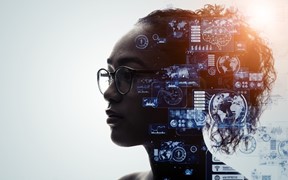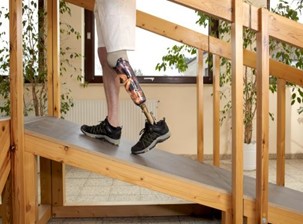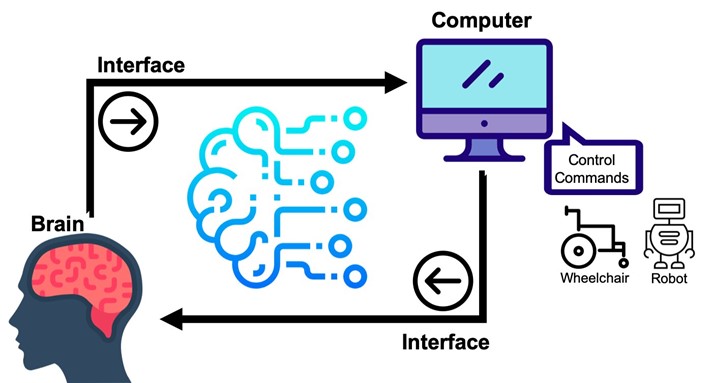How can AI contribute to advanced prosthetics and assistive technologies?

How can AI contribute to advanced prosthetics and assistive technologies?
by Maximilian 03:01pm Jan 30, 2025

AI can play a pivotal role in advancing prosthetics and assistive technologies, improving the functionality, adaptability, and usability of devices for individuals with disabilities. By enhancing the way prosthetics and assistive devices work, AI enables these technologies to become more intuitive, personalized, and capable of responding to the needs of users in real-time. Here are several ways AI is contributing to the development of advanced prosthetics and assistive technologies:
1. Enhanced Control and Adaptability in Prosthetics
Real-Time Adaptation: AI can enable prosthetics to adapt to different environments and tasks. For example, AI algorithms can analyze signals from the user’s muscles or nerves (in myoelectric prosthetics) to adjust the movement of a prosthetic limb. This allows for more natural and intuitive control, enabling users to perform complex tasks with their prosthetics, such as walking, gripping objects, or climbing stairs.
Learning User Movements: Machine learning algorithms can enable prosthetic limbs to "learn" from the user’s movement patterns over time. By analyzing data from sensors embedded in the prosthetic, AI can recognize the user’s specific movement styles and make real-time adjustments to improve comfort and functionality, essentially personalizing the device to the individual.
Predictive Control: Advanced AI algorithms can predict the user's next movement based on their past behavior, allowing for smoother and more anticipatory control. This predictive capability makes prosthetics feel more natural, reducing the need for conscious effort in controlling them.

2. Brain-Computer Interfaces (BCIs) for Prosthetics
Direct Brain Control: AI can facilitate the development of brain-computer interfaces (BCIs) that allow users to control prosthetic limbs directly with their brain signals. By analyzing and decoding brain activity using AI models, BCIs can enable individuals with severe disabilities (e.g., paralysis or amputation) to control their prosthetic limbs as if they were part of their own body.
Improved Signal Interpretation: AI-powered algorithms can interpret brain signals with greater precision, translating them into actionable commands for prosthetics. This improved signal processing leads to more accurate and fluid movements, enabling users to interact with their environment more effectively.

3. Customization and Personalization
User-Centric Design: AI can be used to personalize prosthetics and assistive devices based on the user’s unique needs, preferences, and goals. For example, machine learning algorithms can adjust the behavior of prosthetics based on the user's gait, grip strength, and range of motion, ensuring that the device works optimally for each individual.
Adaptive Interfaces: For individuals using assistive devices like wheelchairs or communication aids, AI can help create interfaces that adapt to the user’s cognitive or physical abilities. For instance, AI-based speech recognition systems can learn to better understand a user’s speech patterns over time, improving accuracy and ease of use in communication devices.
4. Assistive Devices for Mobility and Independence
Smart Wheelchairs: AI can enhance the functionality of wheelchairs, making them more responsive to the user's needs. For example, AI-powered wheelchairs can use sensors and machine learning algorithms to navigate complex environments autonomously, avoid obstacles, and even follow the user’s voice or gestures for direction.
Navigation Assistance: For individuals with visual impairments, AI-enabled assistive technologies, such as smart glasses or navigation apps, can provide real-time feedback to help them navigate spaces. These systems use AI to analyze the environment, detect obstacles, and provide auditory or haptic cues to guide the user safely.
Exoskeletons for Mobility: AI-powered robotic exoskeletons can provide mobility support to individuals with paralysis or severe motor impairments. These exoskeletons can be controlled by the user’s body movements or brain signals, using AI to analyze user inputs and ensure coordinated and efficient motion for walking or standing.
5. Artificial Vision and Hearing Technologies
Vision Enhancement: AI is being used in devices that help people with visual impairments. For example, AI can process visual data from cameras and convert it into audio or haptic feedback, providing users with a form of "artificial vision." AI algorithms can identify and describe objects, text, or faces, helping individuals navigate and interact with their surroundings more easily.
Hearing Aids with AI: Advanced hearing aids leverage AI to provide better sound amplification and filtering. These devices use AI to analyze the surrounding environment and adjust the sound output in real-time, enhancing speech recognition and reducing background noise. AI can also learn the user's preferences and automatically fine-tune hearing settings for different environments.

6. Speech and Language Assistive Technologies
Speech Recognition for Disabled Users: AI can power speech recognition systems that allow people with disabilities to interact with devices or control their environment using their voice. AI improves the accuracy of speech-to-text conversion, even in noisy environments or for individuals with speech impairments.
Augmentative and Alternative Communication (AAC): AI can assist individuals with speech disorders (e.g., those with ALS or cerebral palsy) by translating their gestures, eye movements, or even brain activity into speech or text. AI algorithms can adapt to each person’s unique communication patterns, improving communication speed and accuracy.
7. Health Monitoring and Feedback
Monitoring Vital Signs: AI can integrate with wearable assistive devices (e.g., smart prosthetics, exoskeletons, or health trackers) to continuously monitor the health and performance of the user. For example, AI algorithms can track heart rate, movement patterns, or energy expenditure, providing real-time feedback to ensure users are not overexerting themselves or at risk of injury.
Early Detection of Issues: AI can help detect issues with prosthetic devices before they become serious, such as detecting wear and tear, misalignment, or mechanical problems. AI systems can alert the user or healthcare provider to take corrective action, ensuring the device remains effective and safe to use.

8. Emotion and Pain Management
Mood and Emotion Monitoring: AI can help assess and manage the emotional state of individuals using prosthetics or assistive devices, especially those dealing with chronic pain, depression, or anxiety. By analyzing physiological data (e.g., heart rate, brain activity) and behavioral patterns, AI systems can provide insights into emotional well-being and recommend interventions (e.g., relaxation techniques or therapy).
Pain Feedback and Management: For users with prosthetic limbs, AI could help monitor pain signals and adjust prosthetic behavior or movement to reduce discomfort. AI-driven systems could also help optimize pain management strategies, ensuring a better quality of life.
Conclusion:
AI is transforming prosthetics and assistive technologies, making them smarter, more adaptive, and personalized to the needs of users. From enhancing mobility and improving cognitive performance to providing more intuitive and seamless interactions, AI contributes significantly to both the functionality and the overall quality of life for individuals with disabilities. As AI continues to evolve, its potential to revolutionize prosthetics and assistive technologies will only expand, offering more advanced and integrated solutions for those in need.






